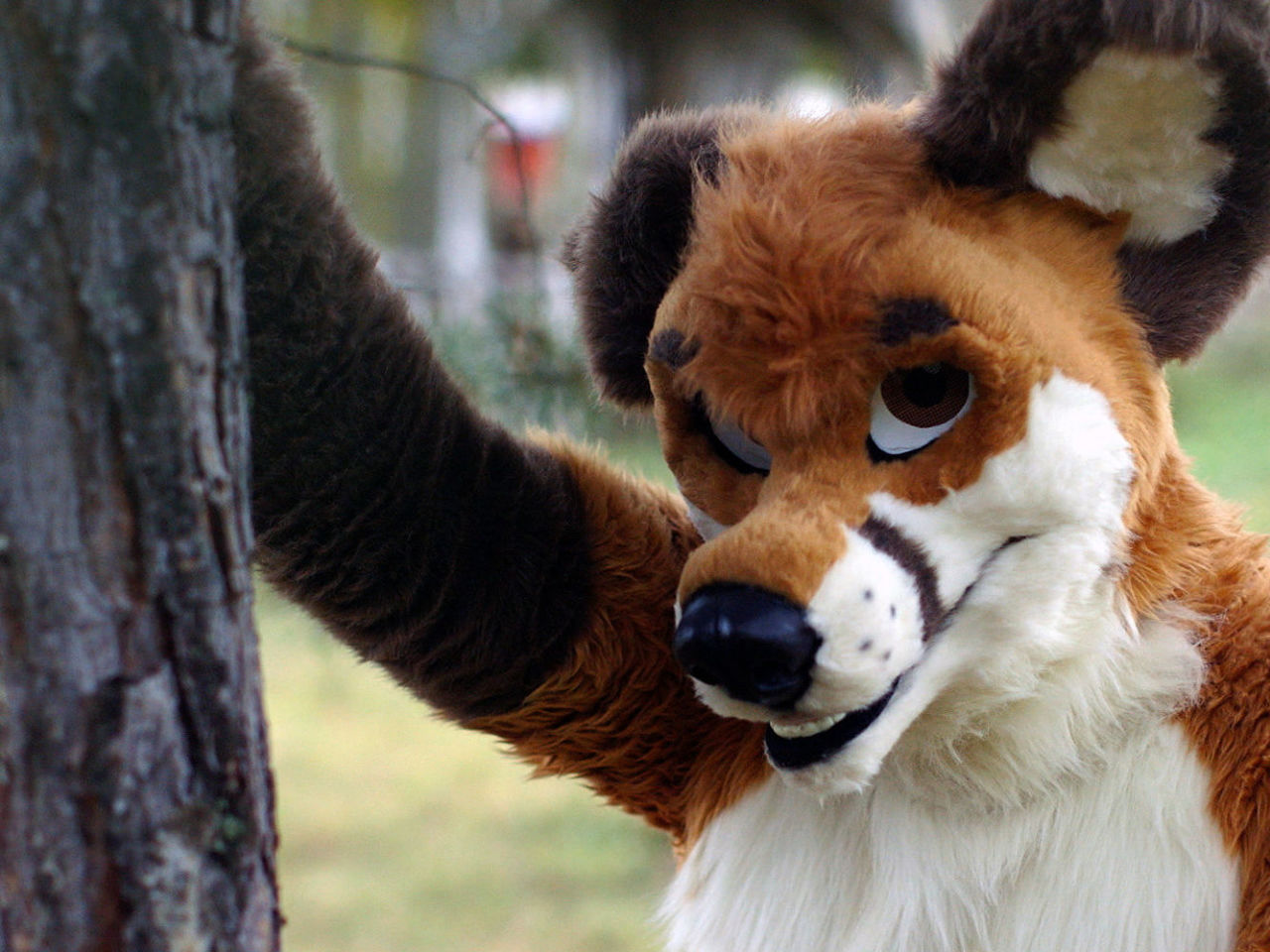
Introduction
The furry fandom has a tendency to cross-over into the more mainstream hobbies of science-fiction fans, artists, writers, etc. and this can cause some friction. Often due to the furry association with these genres, certain stereotypes have become attached to its members.
While many of the furry fandom’s stereotypes can be attributed to malicious outsiders, some have been perpetuated by its members. One of the most pervasive and damaging stereotypes is that all furries are sexual deviants.
But these stereotypes have a spectrum of harmfulness. These can range from believing all furries are geeks or nerds while others try to draw a comparison between the fandom and zoophilia.
However, a lot of these stereotypes derive from ignorance and misunderstandings, so it’s wrong to believe these stereotypes describe a diverse community comprising people of all colors, races, countries, genders, and backgrounds. Furries are simply people who like to express themselves in a certain way. And just like every other person, they also have individual personality traits, interests, sexual preferences, gender identities, and diverse opinions.
The furry fandom isn’t defined by any of those stereotypes, and it’s unfair to assume it does. So it’s essential to be mindful of these stereotypes and not judge the entire fandom based on them. To do that, you might need to learn a little more about these stereotypes and where they stem from.
Why Are There Stereotypes Surrounding the Furry Community?
Humans have an inherent tendency to speculate when they do not fully understand something. We have done this since the dawn of time, assuming the world to be flat and seeing the sun as an entity to be worshiped.
The same has happened in the case of furries, where many people do not fully understand the concept, falling prey to misinformation and misunderstanding. Like any other community, the furry subculture also has different groups, some of whom may confine to certain stereotypes.
These groups do not represent the whole community. But the rampant misunderstanding surrounding the community has led many to believe that these stereotypes are universal traits among furries.
Another reason people stereotype furries is due to their unusual behaviors. In mainstream society, furry behavior is often seen as odd or strange, leading to the assumption that all furries must be weird. It can lead to people forming negative opinions about the furry community as a whole.
The portrayal of furries in the media has further fueled these stereotypes. Many sensationalized TV series and new stories show furries in negative roles, perpetuating the stereotype that furries are weird, awkward, and creepy.
There is also a consensus that the furry fandom is a cult, and every member has similar values, beliefs, and practices. Since cultist mentality is already seen as a negative trait, many people group furries into the same category, often discriminating against them in educational, professional, and social settings.
Many stereotypes, such as those associated with sexual behavior, can harm the furry community. Therefore, there’s a dire need to debunk these myths and create a more understanding atmosphere for furries.
By doing so, we can help destigmatize the furry fandom, allowing it to be seen as the diverse and multifaceted community it is. We must also recognize the individual members of this group and view them in their unique perspectives rather than as a collective culmination of a singular stereotype.

Fox Fursuit
Image via Esquire
Common Furry Stereotypes
Furry stereotypes can be put under several categories, from medical disorders and sexual deviancy to appearance and sexual orientation. Let’s discuss each type in detail.
General
The general thought about the furry community is that it is a fetish-based fandom, where members have a fetish for anthropomorphic animals and dress up in elaborate costumes.
Many also believe that the furry community is a subculture at best and will never become a mainstream culture. Not many believe it to be as well-established as anime or science fiction.
Some also believe that furry fetish is just a fad. People who become a part of the community merely do it for attention and leave the fandom once the novelty wears off.
However, this is not entirely true since being furry does not describe a member’s lifestyle. Being a furry is just a part of their existence, just like being an American or a Christian or vegan would be.
It doesn’t define every aspect of a person’s life or dictate all their behaviors or beliefs. As for it being a fad, the furry fandom has been going strong since the 1980s and has only increased in size.
Appearance
Another common stereotype about the furries is that they are predominantly white men who are also a part of the LGBTQ community. Many furries are thought to be either overweight or underweight and conventionally unattractive.
The older furries, also called gray muzzles due to their graying hair, are thought to be grossly out of shape and averse to fitness. Meanwhile, the LGBTQ furries younger in age are often called furry twinks, which is an insult to the LGBTQ community.
It’s also a common belief that furries are unhygienic and do not wash due to their association with an animal-life lifestyle. While outdated and offensive, these stereotypes are still pervasive in society today.
It’s wrong and downright foolish to believe that all members of a community will look like or have the same sexual preferences. In reality, furries are a diverse group of people who look different from each other and have various sexual preferences. While most furries might be white males, whiteness is neither a prerequisite nor an identification mark for a furry.
Furries live their lives like any other person. They wash, dress well, have jobs, socialize, and look after their appearance just as any non-furry would.
Medical Disorders
Some people also believe furries suffer from mental health issues, such as Asperger’s Syndrome and body dysmorphic disorders. These assumptions are rooted in the belief that furries have an obsession with anthropomorphic animals, which is seen as a sign of autism.
It is also believed that furries may have personality disorders. Many people associate furries with otherkins, individuals who believe their physical form does not define their mental states, spiritual nature, psychology, or personality.
Otherkins believe they have a sympathetic affinity or connection with an entity or animal. Traditionally, otherkins have been mythological, beginning with fay folk and becoming dragons, demons, griffins, and unicorns.
However, there is no scientific evidence to prove that furries have mental disorders or that the attraction towards the furry fandom is due to a genetic or mental underlying cause. The misconception about the correlation of being furry with having a mental disorder comes from the lack of understanding about the community.
We should keep in mind that everyone has unique interests. The way someone expresses themselves is not an indicator of their mental health.
Misconceptions About Furries & Sexual Deviancy
The belief that furries engage in unconventional sex acts is also a common stereotype. According to the stereotype, furries engage in the following types of sexual behaviors.
-
Fursuit Sex
Also known as zoot sex or fursuited sex, fursuit sex describes sexual interaction in which one or both parties wear a fursuit. While some furries might engage in sexual activities wearing a fursuit, it is not always a norm.
Fursuits can be uncomfortable and large to maneuver, making it difficult to perform most sexual activities.
-
Pedophilia
It’s a common misconception that furries are pedophiles, mainly because of the growing number of children entering the community who rely on adult furries for guidance.
But this is entirely false and unfounded. While some individuals might have inappropriate thoughts or desires, it’s unfair to make a blanket statement about all furries being pedophiles.
-
Plushophilia
People who have a deep love and appreciation for stuffed animals are called plushophiles, and the concept is termed plushophilia. However, in most cases, this is only limited to playing with plushies or using them for support or comfort.
But sometimes, plushophiles may feed their sexual desires with plushies. The satisfaction may come from fantasy gratification or pure sensual enjoyment. Since plushies are animals, many associate plushophiles with furries, painting the latter in a negative light.
But with any other negative stereotypes, it’s important to remember that it’s only a few outliers that give the whole group a bad name.
-
Zoophilia
Zoophilia refers to the attraction of humans to animals, which is paraphilia. It means that zoophilia is not an accepted form of sexual expression and can be considered illegal or immoral in many countries.
Many wrongly assume that furries are into zoophilia because of the mix of animals and humans in the furry community. However, this is not true. In fact, many zoophiles also distinguish themselves from beastialists, people who have sexual contact with animals.
To say that all furries engage in sexual activity with animals is untrue. Furries express themselves through art, costume-making, literature, and music related to anthropomorphic animals. But that does not equate to sexual affiliation or attraction.
Relationships
Since many people do not understand what goes inside the furry community, they think furries are not capable of loving others or having normal relationships. Some people even go as far as thinking that there are no married couples in the furry community, and if there are any, they do not have children due to genetics or personal problems.
Kids who join the furry community are thought to be brats with poor relationships with their families, especially parents. None of this is true since furries are just like any other regular person with their fair share of relationship conflicts, love interests, and children.

Furry Couple
Image via BuzzFeed News
Furry Art
A somewhat illogical – and unkind – stereotype about furry artists is that their art amounts to nothing, and they do not have the same skill level as non-furry artists. Going back to assumed sexual deviancy, many believe that furry artists only create pornographic content and often use it as a gateway to children.
All of these are generalizations that do not hold any truth to them. While furry art often has sexual undertones, not all artists create pornographic content. Furry art tackles various genres and can often be seen in galleries, conventions, and publications—all attended by children and adults alike.
The Takeaway
It’s not uncommon for misunderstood communities to be ostracized and stereotyped. But we live in the era of technology and fast Internet where misinformation can spread like wildfire.
It’s about time we learn about the furry community and understand that one or a few outliers do not define the entire population. Furries are just like any of us who have lives, relationships, and careers. They may have their own style and preference, but that doesn’t make them any less of a human being.









Social Interaction
Most of the stigma around furries comes from the stereotypes around their social interactions. For instance, many people think furries are overtly sexual, a stereotype that fits in with the misconception about sexual deviancy.
Similarly, furries are thought to be geeks, nerds, or fanboys with little to no social skills. Some people also believe furries to be egomaniacs, only interested in talking about themselves and their fursonas.
But all these are just misconceptions. You never know if your friendly local librarian who helps you find the sequels of all your favorite fantasy books may be a furry. Similarly, the kind-hearted doctor at the clinic may also be a furry.
Being a part of a specific group does not dictate how someone behaves socially. Likewise, acting a certain way doesn’t mean you belong to the furry community.
Furry Dating App – Ferzu
Image via Ferzu